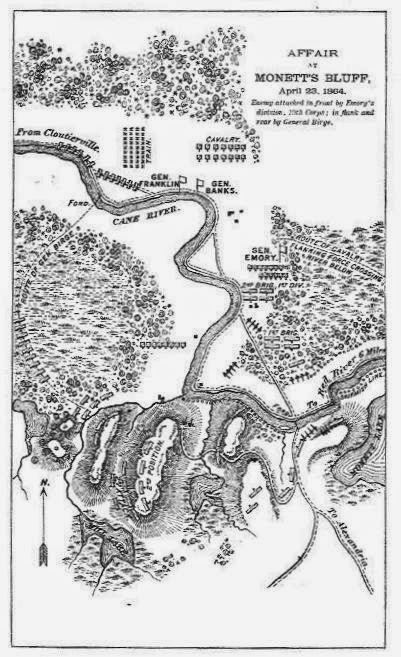Red River Expeditionary Force Bee's Cavalry Division Date 23 April 1864 | 200 400 | |
 | ||
Combatants Confederate States of America, Union Similar American Civil War, Red River Campaign, Battle of Yellow Bayou, Battle of Pleasant Hill, Battle of Mansfield | ||
The Battle of Monett's Ferry was fought on April 23, 1864, between Union and Confederate forces. The Union Army was led by Nathaniel P. Banks. They crossed a river to attack Confederate forces, and were victorious, having forced the rebels to retreat.
Contents
Battle of monett s ferry
Background
Near the end of the Red River Expedition, Maj. Gen. Nathaniel P. Banks' army evacuated Grand Ecore in Natchitoches Parish, Louisiana, and retreated to Alexandria, pursued by Confederate forces.
Battle
Banks's advance party, commanded by Brig. Gen. William H. Emory, encountered Brig. Gen. Hamilton P. Bee's cavalry division near Monett's Ferry, or Cane River Crossing, on the morning of April 23. Bee had been ordered to dispute Emory's crossing, and he placed his men so that natural features covered both his flanks. Reluctant to assault the rebels in their strong position, Emory demonstrated in front of the Confederate lines, while two brigades went in search of another crossing. One brigade found a ford, crossed, and attacked the rebels in their flank, forcing Bee to retreat. Banks's men laid pontoon bridges and, by the next day, had all crossed the river.
Aftermath
The Confederates at Monett's Ferry missed an opportunity to destroy or capture Banks's army. According to General Richard Taylor, the errors made by Bee were as follows: Sending Terrell's Brigade back to Beasley to guard a wagon train "For the safety of which I had amply provided for", taking no steps to artificially increase the strength of his position, (Presumably by building earthworks or other fortifications), in massing his troops to the center "Where the enemy were certain not to make any decided effort" instead of concentrating on his flanks, and finally, in retreating his entire force 30 miles to Beasley upon being forced back instead of attacking the disorganized Union column.
